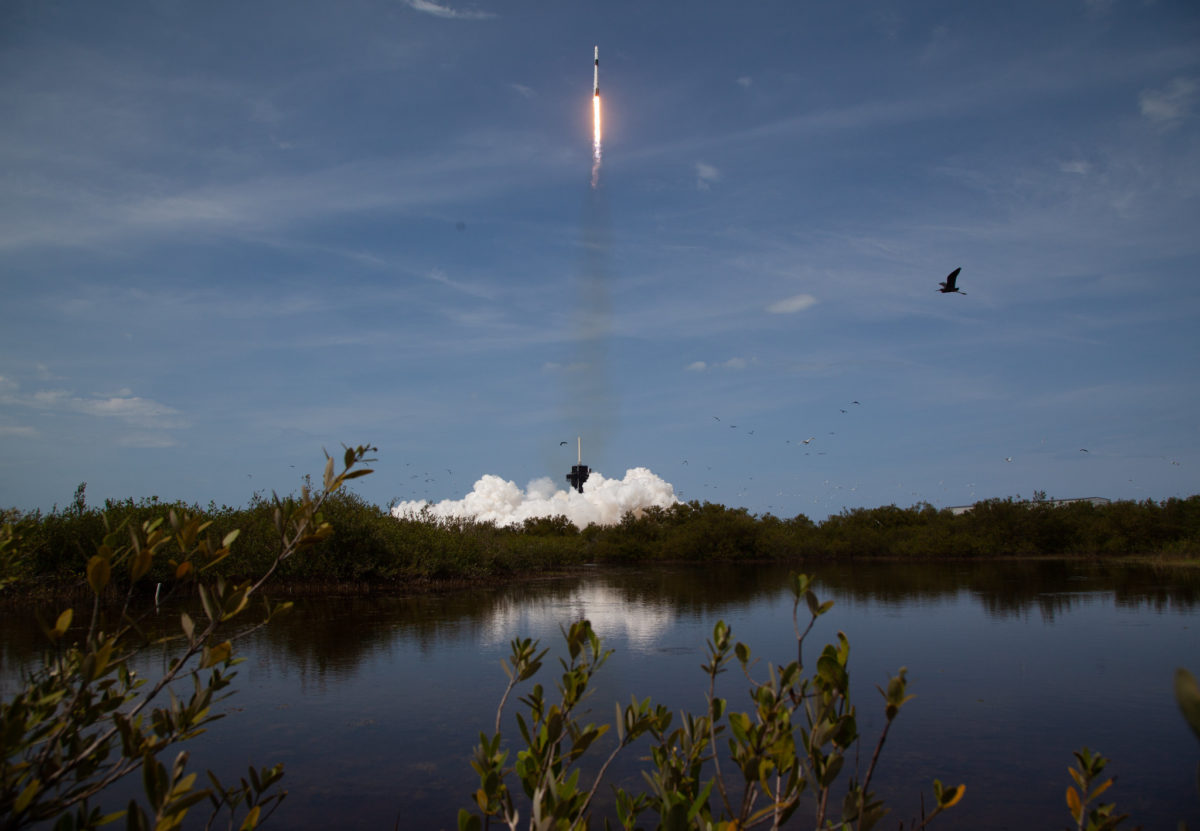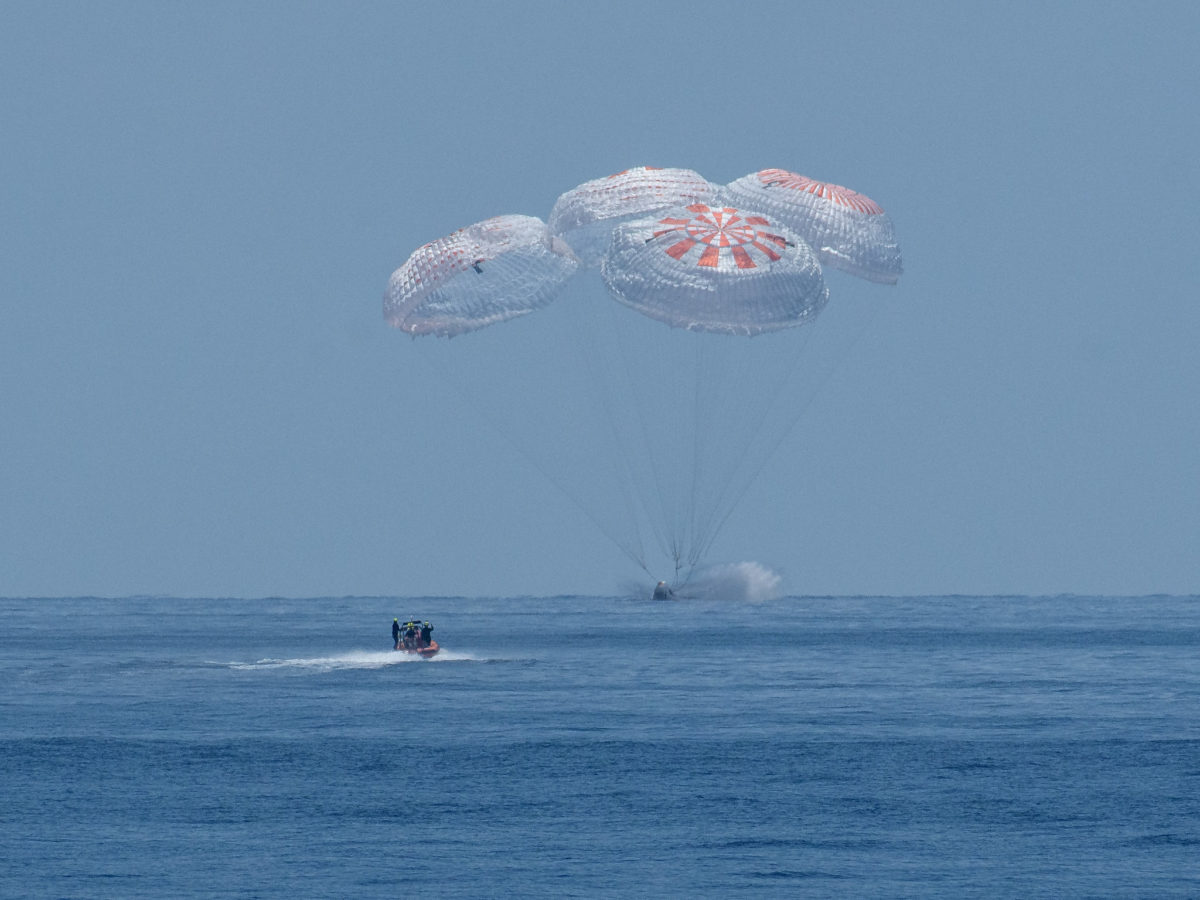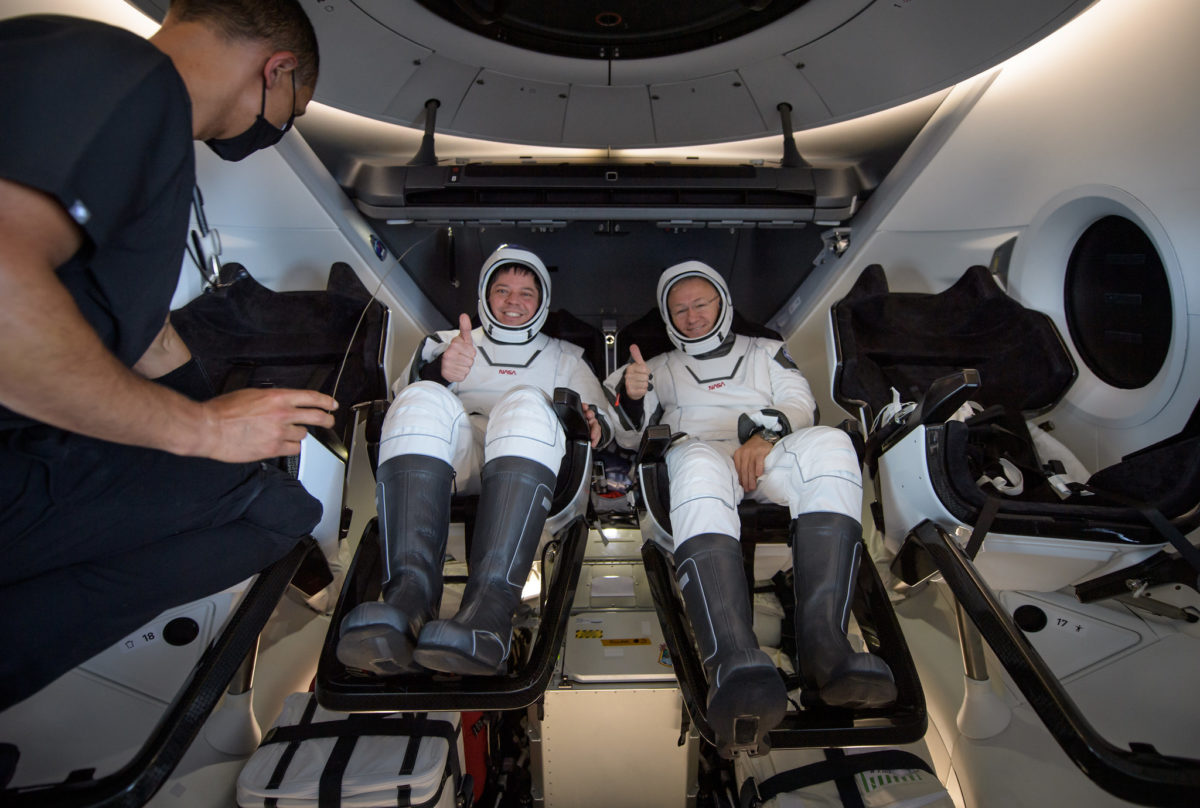The Planetary Society • May 20, 2020
Your Guide to Crew Dragon's First Astronaut Flight
At a Glance
- SpaceX launched NASA astronauts Bob Behnken and Doug Hurley on the first crewed commercial flight to the International Space Station (ISS) on 30 May 2020. They returned to Earth safely on 2 August.
- The mission was the culmination of NASA’s commercial crew program, a public-private partnership approach to spaceflight resulting from policy decisions made by NASA and the White House a decade ago.
- You can learn why the ISS and commercial crew matter, and take other actions to get involved with The Planetary Society.
Nine years after the final Space Shuttle mission blasted off from Kennedy Space Center, humans are once again launching to orbit from the United States. On 30 May, NASA astronauts Bob Benkhen and Doug Hurley climbed inside a SpaceX Crew Dragon vehicle atop a Falcon 9 rocket and embarked on the world’s first orbital commercial spaceflight with astronauts aboard. They arrived at the ISS safely less than a day later, stayed on board for roughly 2 months, and returned to Earth on 2 August.
The mission was the culmination of NASA’s commercial crew program, a partnership between NASA and private industry to ferry astronauts to and from the International Space Station. Unlike previous human spaceflight programs, NASA is a customer buying rides to orbit from commercial providers like SpaceX. It does not directly own or operate the spacecraft its astronauts will fly in.
Space firsts like this are rare. For NASA, it was a moment akin to John Young and Bob Crippen climbing aboard the first Space Shuttle flight in 1981—except this time it was a private company, not NASA, that launched the rocket. Before the launch, the last time a new spacecraft sent a human into orbit was 2003, when Yang Liwei performed China’s first human spaceflight aboard Shenzhou 5. For private companies, there was no comparison. Though Virgin Galactic’s SpaceShipTwo space plane and its predecessor, SpaceShipOne, have carried humans beyond the boundary of space, no company had ever launched astronauts into orbit.



Why did this mission matter?
The mission, known as Demo-2, was a test flight to verify SpaceX’s Crew Dragon is safe to transport astronauts to the ISS. Crew Dragon previously flew to the ISS in 2019 without astronauts aboard.
Since the retirement of the Space Shuttle program in 2011, NASA has relied on Russia to launch its astronauts on Soyuz vehicles. Not only is this undesirable from a U.S. political perspective, it also represents a single point of failure for access to the space station. Not just NASA astronauts will fly aboard Crew Dragon—Japan’s Soichi Noguchi will be 1 of 4 crewmembers on the very next flight scheduled for September 2020.
Visit our commercial crew page to learn more about why and how NASA worked with private industry to create a novel approach to spaceflight in the wake of the Space Shuttle’s retirement:
We've also got an exclusive cost comparison of NASA's commercial crew program versus the agency's prior human spaceflight programs. Spoiler alert: It's a good deal.
NASA's Commercial Crew Program is a Fantastic Deal
NASA's commercial crew program stands to be the agency's lowest-cost human spacecraft effort in nearly 60 years.
While the Soyuz can only carry 3 astronauts, commercial crew vehicles will be able to carry more. This will allow NASA and its international partners to max out the station’s crew complement at 7, enabling more scientific research. Astronauts conduct research aboard the ISS that helps us learn about the effects of long-term spaceflight on the human body. They also test technologies that will be needed for human missions beyond low-Earth orbit.
Visit our ISS page to learn more, including why the ISS shows that multiple countries and private companies can work together for the peaceful exploration of space:
The International Space Station (ISS), humanity’s shared orbital laboratory
The ISS is a versatile science lab, a testing ground for space technology, and a symbol of international cooperation.
Dig Deeper
We dedicated 2 episodes of our flagship podcast, Planetary Radio, to this historical event.
Former NASA associate administrator Lori Garver joined our 6 May episode to look back at the origins of the commercial crew program. As NASA’s associate administrator under President Barack Obama, Garver was one of the strongest advocates of commercial space development.
Former NASA astronaut and current SpaceX senior advisor Garrett Reisman joined our 20 May episode to give us an exclusive preview of the Crew Dragon mission. Reisman was a NASA astronaut who made 2 Space Shuttle flights to the ISS. During the first he served aboard the station for 3 months.
The Planetary Society believes that NASA should create a pathway for the U.S. private sector to take on activities previously led by the government in low-Earth orbit. This will enable NASA to focus its resources on sending humans further out into space and helps foster a vibrant, exciting new industry for the nation. See more of our Principles for Human Spaceflight.
Get Involved
The mission may have ended, but there's so much more to explore. The Planetary Society shares updates from programs like the International Space Station and Commercial Crew to foster public knowledge of space exploration, which helps build support for space science and exploration. Sign up for our weekly newsletter The Downlink to receive updates on other missions, plus get exciting space images, sharable facts, and actions you can take to be a better space advocate.
You can also share this page, learn more about NASA's Commercial Crew program, and browse stunning images in our image library.
Want to get started right now? Visit our Action Center to see what you can do right now to take action in your community and with your government to support space exploration.
Action Center
Whether it's advocating, teaching, inspiring, or learning, you can do something for space, right now. Let's get to work.
Finally, if you’ve ever dreamed of being an astronaut, you’ll want to try SpaceX’s Crew Dragon docking simulator. This free game lets you work with the same control interface that NASA astronauts use to manually pilot Crew Dragon. Ordinarily, dockings with the International Space Station are automated, but the astronauts can take manual control if needed.
Support our core enterprises
Your support powers our mission to explore worlds, find life, and defend Earth. You make all the difference when you make a gift. Give today!
Donate

 Explore Worlds
Explore Worlds Find Life
Find Life Defend Earth
Defend Earth




